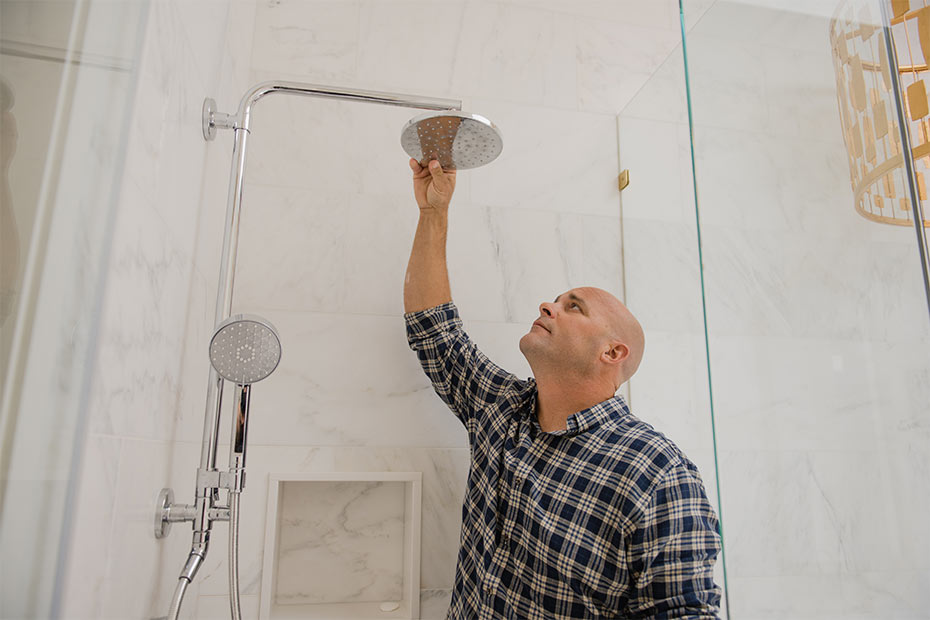Published September 5, 2019 • 4 Min Read
Whether the motivation is financial, lifestyle or mobility related, the bottom line is that many older adults are leaving their family homes for something smaller. Just because it’s the popular thing to do, doesn’t mean it’s the only option.
If you’re weighing your home options as you approach retirement, consider all the alternatives available to you. HGTV Canada’s Bryan and Sarah Baeumler share tips if you want to stay in your home longer.
1. Renovate Your Home
A key motivator for downsizing in retirement is the need to address mobility issues. While it may seem easier not having to climb stairs to your bedroom every day when your mobility is limited, it’s not the only option. Consider retrofitting your home to accommodate your (potential) physical challenges. It doesn’t need to be a large or expensive project. Here are a few practical tips:
- Retrofit your shower. Remove the need to step over a bathtub by converting to a walk-in.
- Add grab bars. Consider where you spend most of your time and where it makes sense to add them. The front door (where you’re putting on shoes, juggling groceries, etc.), the shower and the top of the stairs are all great spots.
- Create a bedroom on the main floor if you have the space. Do you have a den or formal living room you’re not using anymore? A main-floor suite can eliminate a few trips up and down the stairs each day.
- Replace doorknobs with lever handles. This may be a simple, cost-effective and game-changing option for those dealing with arthritis.
- Install carpeting over hardwood to reduce the chance of falls. While you’re at it, get rid of rugs and mats that can be easily tripped over.
- Consider pull-out kitchen drawers. You’ll reduce the need to bend over to reach the back of a cabinet for a pot or platter.
- Add smart home devices. Smart lighting, front door video camera and thermostat systems can allow you to control key elements of your home without getting up from your chair — or out of bed.
2. Rent Part of Your Home
Don’t want to be tied down to the cost of running your home? Or maybe you’d welcome some ongoing rental income? Consider renting out part of your home. This move provides a consistent source of income that can give your retirement cash flow an added boost. “Any kind of income-generating asset is a great investment to make or keep,” says Bryan. “That way, money doesn’t stop flowing when you retire.”
3. Consider Multi-generational Living
For many, the thought of moving out of the family home and the prospect of leaving their friends and family can be upsetting. But what if your family moved in with you … and paid you to do so? Multi-generational living is on the rise in Canada, as young adults face high housing costs. This scenario doesn’t (necessarily) mean your kids move into their old bedrooms—rather, you can take steps to convert your home into multiple units, for either rent or purchase. Whatever option of multi-generational home you choose, it can be an affordable alternative to downsizing. Perhaps you convert your main level to a bungalow-style living space, while renovating the upper level to a stylish loft for your kids … or the other way around! The key to success with this plan is to ensure that each portion of the home provides the comfort, space and privacy its inhabitants need.
4. Use Your Home’s Equity to Your Advantage
If you have lived in your home for many years, you’ve likely built up equity in your property. If that’s the case, you can pull out some of this equity to use toward updating your home. Doing so can save you the costs and stress of moving, particularly if your preference is to stay put. While using your home equity may be a cost-effective borrowing option, it needs to be carefully considered. It’s important to have the retirement cash flow available to make payments on a mortgage or home equity line of credit, and to have a repayment plan in place.
Downsizing is right for many people—but it’s not for everyone. As you determine what best suits your needs, consider the various ways to make your current home work for you, and address the financial, health and family factors that influence your ultimate housing decision.
This article is intended as general information only and is not to be relied upon as constituting legal, financial or other professional advice. A professional advisor should be consulted regarding your specific situation. Information presented is believed to be factual and up-to-date but we do not guarantee its accuracy and it should not be regarded as a complete analysis of the subjects discussed. All expressions of opinion reflect the judgment of the authors as of the date of publication and are subject to change. No endorsement of any third parties or their advice, opinions, information, products or services is expressly given or implied by Royal Bank of Canada or any of its affiliates.
Share This Article






